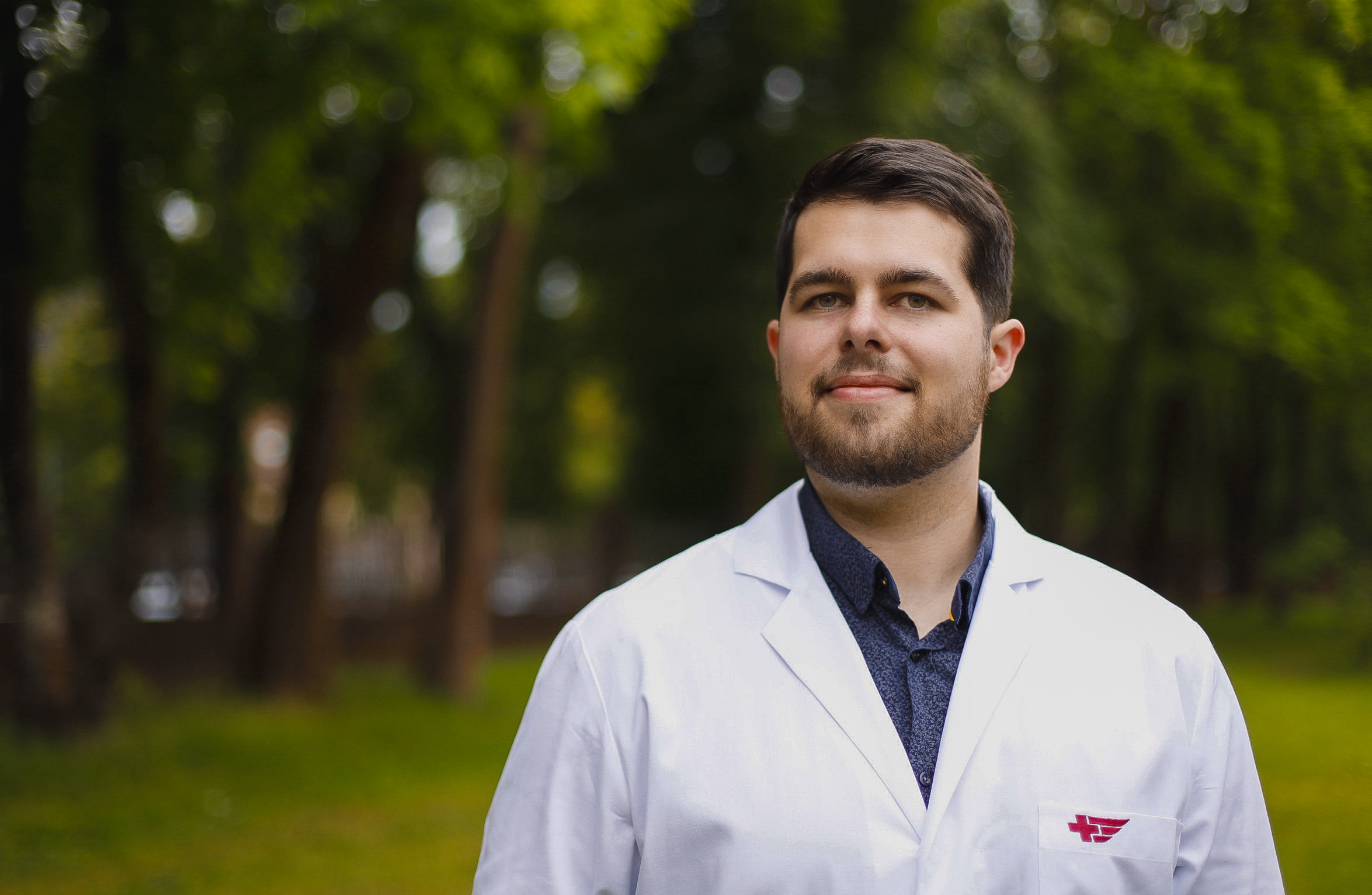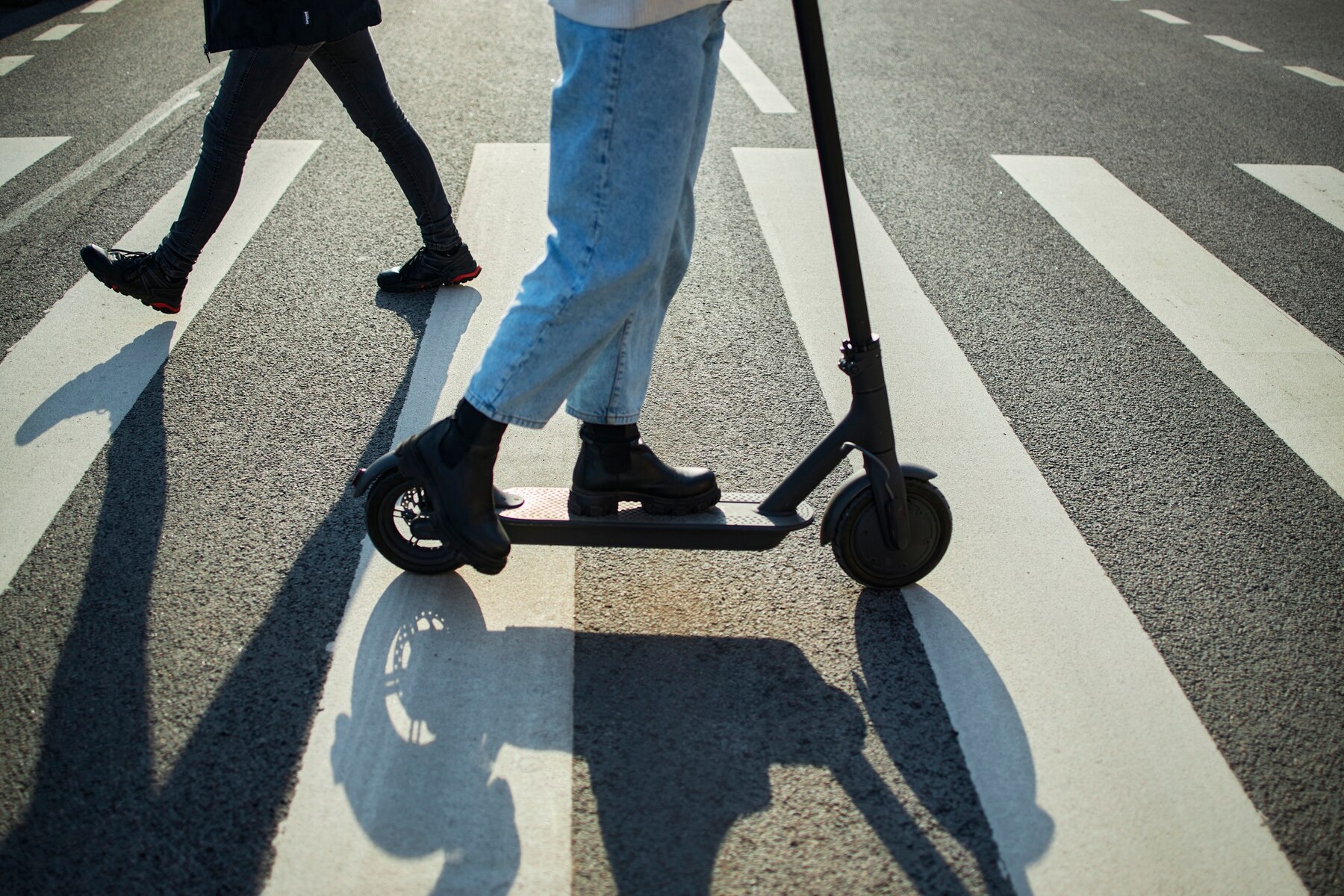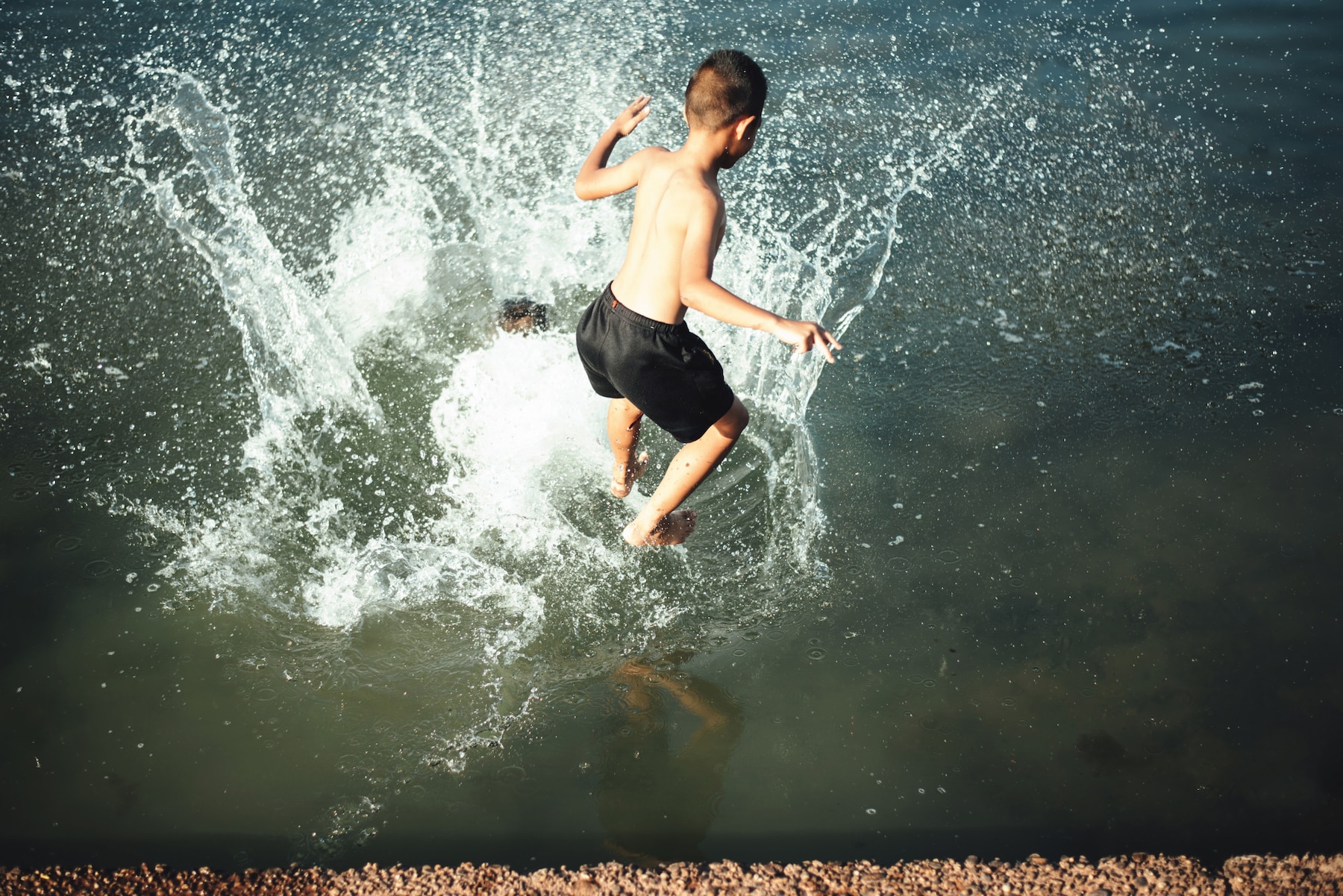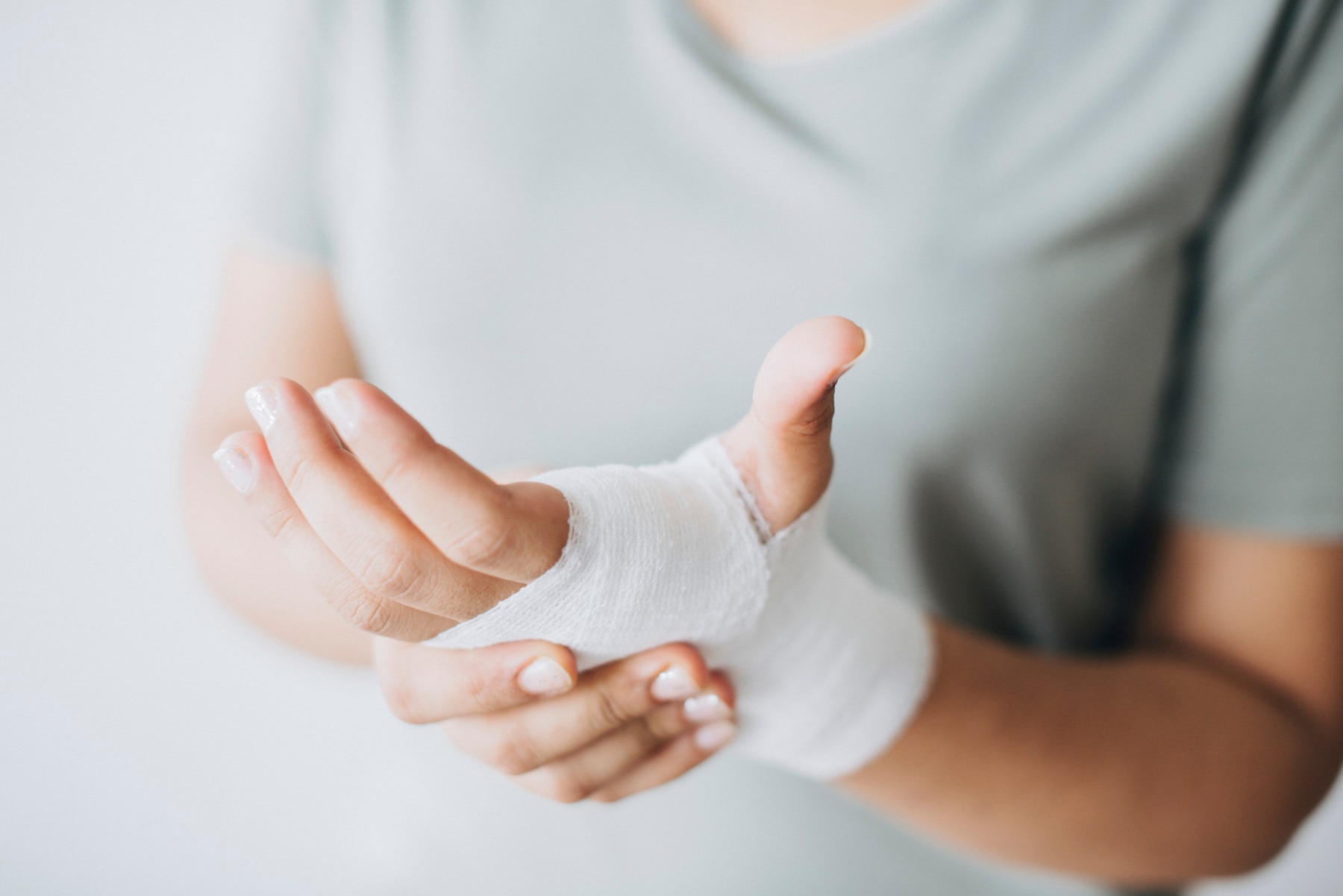 Resident doctor Simonas Utkus / MF archive
Resident doctor Simonas Utkus / MF archive
The summer holidays are a great time to improve your health and get more physically active. Endurance runs or multi-day bike rides can be very tempting, but are your muscles, ligaments, joints, and other support systems ready for much more than the usual load? And what about such seemingly innocent activities as scooter rides or swimming in a lake and those attempts to jump off piers? We asked Dr Simonas Utkus, a resident for the orthopaedics-traumatology programme at the Faculty of Medicine of Vilnius University and a doctor at Vilnius University Hospital about the most common injuries seen during the summer months: what to do in the event of an accident, how to give first aid, whether you should always have a first aid kit and how to prepare your body in general, if you want to start exercising more.
What are the most common injuries during summertime? Which are the most serious?
Orthopaedists and traumatologists, especially in the emergency unit, note that although there are many different types of injuries throughout the year, they do have certain seasonality. If we were to identify the differences between summer and winter injuries, summer is the time when more sports-related injuries, as a result of running, walking and driving, for example, occur due to outdoor leisure activities and physical exercise. In both spring and summer, people’s favourite street scooters can be described as the scourge of injuries. These injuries are higher kinetic energy injuries or more aggressive injuries, which means they involve significant fractures. Open fractures are more difficult to heal, and patients can spend a month, two or more in hospital. Although doctors can fix the broken bones, the soft tissue is very important during surgery, and damage to it can lead to various complications. When there is damage to the skin or perhaps a crush injury, treatment is never easy.
 Assoc. photograph
Assoc. photograph
There is a risk of injuries related to farming and gardening both in spring and summer. People resume farming and gardening without taking extra care, injuring themselves with various sharp tools (saws, angle grinders, etc.). This creates more work for microsurgeons who try to rebuild injured or severed limbs. Such injuries are a major challenge because in many cases, it is not just a bone fracture, but also damage to muscles, tendons, nerves and blood vessels. One such injury can keep medics busy through the night.
What about recreational water injuries?
In summer, it is very important to remind people to be careful in the water. They jump off piers and try various tricks. It may seem like a very innocent pastime, but when doing so, especially when you don’t know the body of water, it is difficult to assess its depth or whether there are stones on the bottom, and there is a very high risk of head injury, spraining one’s neck, etc. The risk of similar injuries also remains when swimming in the sea. When a wave hits, a person may fall down, turn their neck, and hit their head on a rock, especially when swimming in bodies of water abroad, where the waves and the rocks are bigger. It only takes a small thing to cause a serious spinal injury or paralysis. This is why we doctors constantly stress the need to be careful when swimming in the sea, a lake or another body of water. Until an accident happens to someone close to them, people don’t realise how quickly things can change in just seconds.
 Assoc. photograph
Assoc. photograph
In the event of trauma in the water or serious fractures, how do I give first aid?
It depends on the severity of the injury. The first thing to do is not to rush in lifting the person and getting them back on their feet. One of the main rules of first aid is to make sure they have not suffered head, neck, or spinal injuries, are breathing and conscious. If they cannot answer questions, are disoriented, say they are nauseous or are actually vomiting, there is a good chance that they have suffered a head injury. In the case of whiplash or spinal injury, a rush to get a person off the ground can cause serious harm. For example, broken bones can cause damage inside the spinal cord. So first ask the injured person if they can move – if they can turn their neck, can they feel their arms and legs. The simplest questions establish that they have not suffered a serious injury. And if there is a good chance that this has happened, leave them out of the water in a prone position, cover them to prevent them from freezing and call an ambulance immediately, but do not attempt to move or transport them.
It is also necessary to check their airway for any obstructions: place your hand and your ear on their chest to ascertain that they are breathing, and if not, begin resuscitation (CPR). This is where educating the public on how to perform CPR correctly is very important. Free CPR courses are available. Taking such a course is more than just about getting a diploma: at a critical moment, your knowledge may save the life of someone, even if you don’t know them.
 Assoc. photograph
Assoc. photograph
In the case of broken bones, the arm or leg should be mobilised, because as the fractured bone moves, the sharp fracture points may continue to cut through the soft tissues – muscles, tendons, etc. This is extremely painful. In some cases, even very strong medicines do not help. Anything stable can serve as a splint and must be fastened with a bandage, clothes, etc. It is important to prevent the fractured arm or leg from moving, it must be immobilised. If the ankle or knee is fractured, it is better to wrap the bandage or something else over a broader area, i.e. up to the pelvis or armpit. If the fracture is open, the injured person may lose a lot of blood if you don’t act quickly. The wound should be firmly pressed, for example, with a piece of clothing, just layer upon layer, without changing it, even if it is soaked with blood. The pressing effect is particularly important for pelvic injuries: the pelvis has a lot of open space and loss of blood may happen quickly. There is no need to try to clean the wound. If you are not sure how to use the medical equipment you might have available, it is better to use any simple items. If there are several people around, distribute the tasks among them: one should perform CPR, one should should call an ambulance, one should call other passers-by for help, and so on.
Let’s talk about less serious injuries such as bruising and swelling: what should be done in such cases?
A bruise results from the impact of injury and this can be accompanied by swelling. The limb will definitely swell, especially if you hold it down. In response, the body tries to push more fluid to the injured area to start the healing process. The swelling will cause pain, discomfort and additional risks. If you can manage to keep the limb in an elevated position – by lifting the leg, supporting the arm, or at least keeping it at heart height and moving it for 10-15 minutes every 2-3 hours, the swelling will definitely decrease. There will be less pain, better soft tissue condition, no blistering, and less risk of side effects.
Regarding further treatment, it should be assessed how bad the pain is and whether the person can bend the limb. The injured person may take painkillers and an ice pack placed on the injured area can be helpful. If the pain does not intensify, ice helps, and the functioning of the injured area does not deteriorate, e.g. the injured person can bend their arm or leg, and walk, there is a good chance that the bone is not broken, and it is just a bruise or sprain. Of course, if you have a suspicion, it is always better to visit an emergency unit. Emergency care is available for up to two days after an injury. If someone comes in after a week, it means that the pain was not as intense, and they will get referred to their GP. If the doctor sees that hospitalisation or more serious treatment is required, the appropriate care will be provided.
When considering sprains, I would like to emphasise that people do not generally understand exactly what they are. First of all, it is important to understand the structure of the body: bones, muscles, tendons, ligaments, nerves and blood vessels. Tendons, which are similar to ligaments, connect muscles to bones. For example, a sprained ankle ligament is a common injury, and is a partial tear of the ligaments. In the case of a complete tear, the pain is much worse, the damaged area is swollen and healing is more difficult. If many of the ligaments are torn, the bones may move because the ligaments are no longer able to hold them in place, i.e. to perform their main function. Then surgery may be required. Without surgery, a person may walk with a limp for the rest of their life. So a ligament sprain is a rather abstract diagnosis. However, if the doctor, after assessing the risks, sees that it is not a fracture, i.e. the joints are in place, the bones are in place, and nothing has shifted, then there is a partial tear, which will heal, but it will take time, will require the application of ice packs, and resting the limb in a raised position.
 Assoc. photograph
Assoc. photograph
Timely exercise is also healing. As the pain decreases, the application of an ice pack reduces inflammation within the first two days (heat application, on the contrary, would cause inflammation), and movement or exercise should be gradually reintroduced. The person can gently move the limb, turn it, move it, and start walking carefully, without applying full weight – perhaps initially with crutches to take off some weight. This will help strengthen the muscles. If they feel pain after such exercise, then it must be stopped. The pain itself can cause an inflammatory reaction and a vicious circle will ensue. Exercise should be adequate and gradual. Subsequently, the person should perform strengthening and stabilising exercises, and only then can you return to their regular sport.
What is useful to have in your medical kit, both at home and when you’re active outdoors? And what can be done to prevent injuries in general?
It’s always a good idea to have a bandage to stop bleeding quickly, and disinfectants for bruises and wounds. But each situation is individual. Of course, it is possible to have a first-aid kit with a variety of medicines and medical devices, but it is always better to get advice from specialists – the first aid providers who arrive at the scene – on what to use and how to use it, what medicines to inject, adrenaline, etc., because if you don’t know exactly what to use, you run a high risk of harming more than helping. In the case of CPR, the most important thing is to get air into the lungs as quickly as possible.
If you ride a scooter, a bicycle or a motorbike, have protection for your head, elbows, knees and wrists. A recent study found that one in ten people who report a scooter injury undergo surgery. This means that in most cases a helmet alone is not enough, and legs, arms and wrists, can be broken.
If you want to start doing more physical activity during the summer, jogging, etc., you should generally strengthen your body beforehand with the help of a physiotherapist or sports trainer. The body should be gradually introduced to physical exercise. When working in the garden, for example, it is very easy to sprain the back. Therefore, even for such apparently slower paced activities, one should prepare and strengthen the body. If you spend enough time exercising, your risk of injury is significantly reduced, and if something does happen, the injury will not be as severe, and you’ll feel quite well the next day. So if we can do something to reduce the risk of injury, it is definitely worth investing in ourselves.
